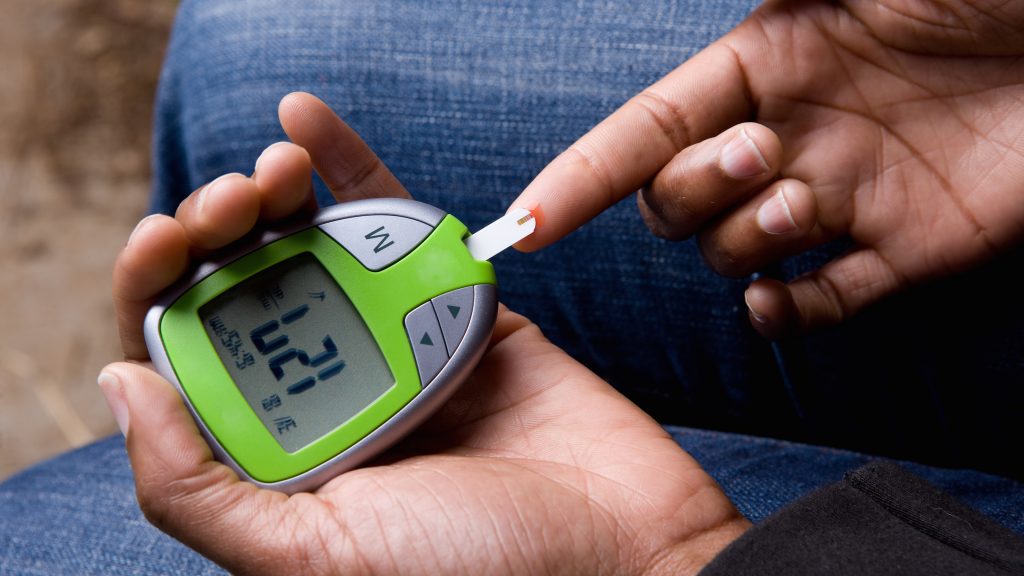
By Adele Hite, PhD, RD, medical review by Dr. Bret Scher, MD,
Maybe you bought a blood sugar meter because you’ve been given a concerning diagnosis of pre-diabetes or diabetes. Or maybe one of these conditions runs in your family. Perhaps you are just curious to know what food does to your blood sugar levels and are willing to sacrifice a few drops of blood to find out. If you are new to testing your blood sugar, be assured that it is simple to do.
If you have a diagnosis of diabetes, you’ve probably been tracking your blood sugar for years. But if you’ve recently decided to try a low-carb or ketogenic diet, you may need to understand your results in the context of your new dietary pattern.
Whether you’re experienced at it or not, testing your blood sugar can help you better identify what dietary patterns lower your blood sugar over time. It can also help you identify specific foods that trigger blood sugar spikes.
1. Getting started
Many different blood sugar meters (a.k.a. glucose meters or glucometers) are available, and most of them are fairly inexpensive. However, make sure that you check that test strips for your meter are affordable and available. The real cost of blood-sugar testing lies in the cost of the strips, which can only be used once and which do expire after a certain date.
In addition to a meter and strips, you will need a lancet, which contains a short, small needle that will prick your finger quickly and (almost) painlessly. These needles are very inexpensive and are discarded after each use. Most blood sugar meters come with a lancet and a dozen or so replacement needles.
How to measure blood sugar
You should read the directions that come with your blood sugar meter and follow those carefully. For most meters, the general procedure goes like this:
- With clean hands, place a test strip in your blood sugar meter.
- Prick the side of a finger with the lancet to draw a drop of blood.
- Place the tip of the test strip on the drop of blood.
- After a few seconds, the blood sugar meter will give you a reading.
Many blood sugar meters will keep track of your blood sugar readings for a number of days or weeks. Even if your meter stores these readings, it may be a good idea to record the date, time, and other information to share with your healthcare provider or for your own purposes. Use a notebook, a computer spreadsheet program, or an app like this one to keep track of your readings.
When to measure blood sugar
If your healthcare provider has given you specific instructions about when to test your blood sugar, you should follow those instructions.
Many people check their blood sugar first thing in the morning, before eating. Because this means you have not eaten for 8-10 hours, a blood sugar measurement at this time of day is called a “fasting blood sugar.” It is good to check this at the same time in the morning every day.
You can also check your blood sugar right before eating (called a pre-meal or preprandial level) or after a meal (post-meal or postprandial level). If you have been instructed to check your blood sugars at a certain time interval after a meal, you should begin timing when you begin eating.
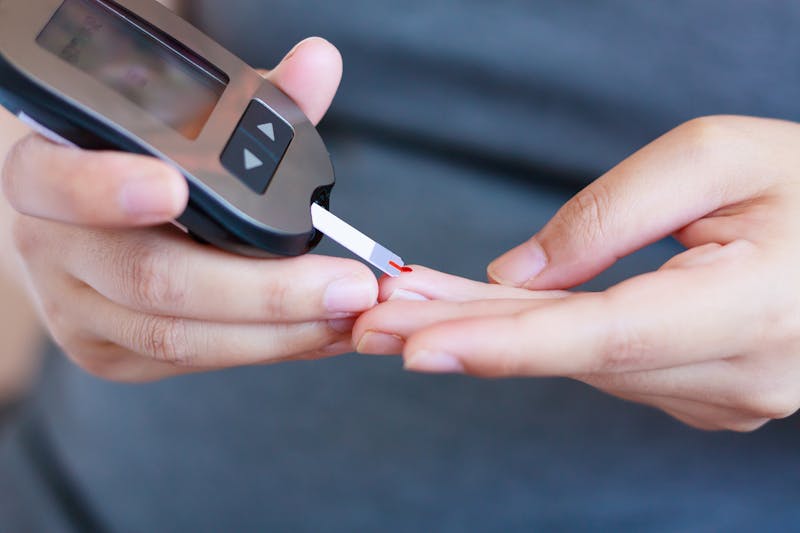
2. What is a normal blood sugar?
Ideas about “normal” blood sugar levels are based on individuals eating a standard American diet. This type of diet usually contains about 50% of calories from carbohydrate, the nutrient that tends to raise blood sugar the most. If your intake of carbohydrate is much lower than this, you may have a different “normal.” You can jump to “How a low-carb diet affects blood sugar measurements” for more information.
Fasting blood sugar levels
Normal fasting blood sugar level in someone who does not have diabetes is generally between 70 and 100 mg/dL (3.9 to 5.6 mmol/L).
If your fasting blood sugar consistently falls in the range of 100 to 125 mg/dL (5.6 to 6.9 mmol/L), you may have prediabetes, which is also referred to as impaired fasting glucose.
If your fasting blood sugar is above 126 mg/dL (7.0 mmol/l) on two separate occasions, then it is likely that you have diabetes. If you are concerned about the measurements you’re getting, especially if you are already on a low-carbohydrate diet, see “How a low-carb diet affects blood sugar measurements.” A few blood sugar measurements may not always provide an accurate picture of your health.
Post-meal blood sugar levels
If your healthcare provider has not given you specific instructions regarding when to test post-meal blood sugars, you may want to try measuring your blood sugar at 1 hour and/or at 2 hours after you begin eating. Whichever reading is the highest is the one that you should to pay attention to because blood sugar levels are likely to peak at different times.
When your blood sugar peaks can depend on a number of factors, but a lot depends on your body’s ability to handle the carbohydrate foods that you may eat during a meal. The carbohydrate content of a meal contributes much more to post-meal blood sugar levels than the fat and protein content.2
For people who do not have diabetes, blood sugar levels typically peak around an hour after the start of a meal.3
In people with type 2 diabetes, a blood sugar reading taken two hours after the beginning of a meal is most frequently used as a post-meal measure.
According to the American Diabetes Association, a normal post-meal blood sugar reading at one or two hours after beginning a meal is below 140 mg/dL (7.8 mmol/L).4
Some clinicians and individuals are more cautious about high blood sugars and prefer dietary patterns that keep post-meal blood sugar levels lower — around 120 mg/dl – than what is defined in the medical literature.
If your blood sugar is consistently 140 mg/dL (7.8 mmol/L) or more, but less than 200 mg/dL (11.1 mmol/L) when it is measured two hours after beginning a meal, you may have prediabetes or impaired glucose tolerance.5
If you measure your blood sugar two hours after the beginning of a meal, and it is consistently 200 mg/dL (11.1 mmol/L) or above, you may have diabetes.
If your blood sugar levels, either fasting or post-meal, are consistently higher or lower than normal, you may have a medical condition that requires a visit to a healthcare provider. However, if your blood sugar levels suddenly go from “normal” to “not normal” when you get a new meter or a new container of test strips, you may want to check your meter and strips to ensure that they are taking accurate measurements. When a result is very different than expected, take three measurements and use the average of the three.
Blood glucose chart
Each measure should be done on at least two separate occasions before you suspect that your blood sugars are too high or too low. See your healthcare provider about any concerns you may have about your blood sugar readings
| Fasting blood sugar | 2-3 hours after eating | |
| “Cautious” approach | 100 mg/dL (5.6 mmol/L) or lower | 120 mg/dL (6.7 mmol/L) or lower |
| Normal | 100 mg/dL (5.6 mmol/L) or lower | 140 mg/dL (7.8 mmol/L) or lower |
| Prediabetes | 100 to 125 mg/dL (5.6 to 6.9 mmol/L) | 141 to 199 mg/dL (7.8 to 11.0 mmol/L) |
| Diabetes | 126 mg/dL (7.0 mmol/L) or higher | 200 mg/dL (11.1 mmol/L) or higher |
3. What to do if your blood sugar levels are lower than normal
Blood sugar levels that are consistently below 70 mg/dL (3.9 mmol/L) often cause other symptoms such as feeling lightheaded, jittery, irritable, fatigued, or sweaty.
Low fasting blood sugar levels can occur if you have diabetes and your medication does not match your carbohydrate intake. Since dietary carbohydrate is not necessary for adequate nutrition, instead of increasing your carbohydrate intake, your healthcare provider can adjust your medication to match a lower intake of carbohydrate.
Low fasting blood sugar levels can also occur in people who do not have diabetes and can be the result of a serious underlying medical condition such as an eating disorder or a tumor. If you have low fasting blood sugar levels and do not take diabetes medications, you should see your healthcare provider.
Very low post-meal blood sugar levels are often called reactive hypoglycemia. This condition can occur in people with diabetes and in those with normal fasting blood sugars. How this should be treated depends on what the underlying cause is. Reactive hypoglycemia can be a symptom of polycystic ovary syndrome, which in some cases can be successfully treated with a low-carbohydrate diet.
4. What to do if your blood sugar levels are higher than normal
If your fasting or post-meal blood sugar readings are consistently higher than normal, you may have prediabetes or diabetes. If you suspect you have diabetes or prediabetes, you should see your healthcare provider as soon as possible.
Symptoms of diabetes, beyond elevated blood sugars, may include increased thirst and urination, severe fatigue and excessive hunger. For more details see the guide below.
Signs and symptoms of diabetes (type 1 and 2)
5. Personalizing your diet based on blood sugar response
In addition to seeing your healthcare provider, there are steps you can take to reduce your blood sugar levels. If you check your blood sugar after meals and keep track of those measurements, along with what foods were eaten and in what amounts, you may be able to see what foods cause a spike.
Often blood sugar spikes will be caused by foods that are high in carbohydrate, but all carbohydrate foods are not the same when it comes to raising blood sugar. Because starchy foods digest down to glucose — otherwise known as sugar — very quickly, some starchy foods may end up having a much greater impact on blood sugar than you might think. Although a banana may seem sweeter than a baked potato, the potato may actually have a bigger impact on blood sugar.7
Because foods that contain a lot of carbohydrate have the biggest impact on what your blood sugar levels are, no matter what diet you are on, it makes sense to reduce them, even if it is just a little bit at a time. Our guide, “Eating better: six steps down carb mountain,” can help you improve your diet, one step at a time.
If you have been diagnosed with diabetes, either type 1 or type 2, this food guide can help you choose foods that may reduce your need for blood sugar control medications:
The diabetes diet: the best foods to control diabetes
Although carbohydrate raises blood sugar levels more than other types of nutrients, sometimes eating large amounts of protein, found in foods like meat, can cause blood sugar levels to rise more than you might expect. Our protein guide can help you find the right amount of protein foods to eat, while keeping your blood sugar levels in check.
Other foods that may be low in carbohydrate content can cause blood sugar levels to spike. One study has shown that caffeinated coffee impairs the body’s ability to manage dietary glucose, resulting in higher blood sugar levels.8
If a food or beverage seems to be causing a blood sugar spike, you can always try leaving it out of your diet for a few days to see if you notice a difference.
6. Other ways to measure blood sugar
Checking your blood sugar levels with a glucometer is not the only way to measure blood sugar. Other tests that your healthcare provider might use to check your blood sugar levels are hemoglobin A1c (HbA1c) and oral glucose tolerance test (OGTT). If you are really lucky, you may have access to a continuous glucose monitor (CGM).
HbA1c provides an estimate of your average blood sugar levels over time, giving you a sense of your average levels over the last two or three months. A HbA1c test is the most common measurement used for diagnosing type 2 diabetes.9
However, HbA1c tests and blood sugar tests often do not agree. Using HbA1c levels to diagnose diabetes often fails to identify individuals who would otherwise be diagnosed with diabetes using blood sugar levels.10
Your HbA1c is normal if it is below 5.7%. You may have prediabetes if your HbA1c is 5.7% or more, but less than 6.5%. You may have diabetes is your HbA1c is 6.5% or over.
| HbA1c | |
| Normal | less than 5.7% (38.8 mmol/mol) |
| Prediabetes | 5.7% to 6.4% (38.8 to 46.4 mmol/mol) |
| Diabetes | 6.5% (47.5 mmol/mol) or higher |
| “Cautious” approach | Less than 5.4 % (36.0 mmol/mol) |
To learn more about HbA1c measurements and how they relate to blood sugar levels you record with your glucometer, see our full guide:
Understanding HbA1c — the long-term blood sugar
An oral glucose tolerance test (sometimes referred to by its initials, OGTT) can be more accurate in terms of diagnosing prediabetes or diabetes.11
It measures your blood sugar two hours after you drink 75 g of a solution of sugar (glucose). Because it requires drinking a large sugar solution, an OGTT may not be a useful test for a person on a long-term low-carb or ketogenic diet.
A continuous glucose monitor (CMG) is a wearable device that, as the name says, continuously measures blood glucose levels. Although they are expensive and usually only approved by insurance for type 1 diabetes, they are a very accurate way to measure your blood sugar throughout the day. This allows you to easily see post meal variations and get an average blood sugar level for the day.
7. How a low-carb diet affects blood sugar measurements
If you are on a low-carbohydrate diet, you may find that some ways of measuring blood sugar will not provide you with “normal” levels.
For individuals on a low-carb diet, fasting blood sugar levels may be slightly above normal. This is due to “adaptive glucose sparing” and “the dawn phenomenon.” Your fasting blood sugar levels are elevated because your liver is making extra glucose to prepare your body for the day. If you are concerned about these levels, have your HbA1c, a longer-term measure of blood sugar level, checked (more on this below). If you are on a low-carb diet, your HbA1c will be lower than your fasting blood sugar levels would predict.
For people who have been on a low-carb diet for a long time, an OGTT may misdiagnose you as having diabetes. Because your body is fat adapted and no longer sugar adapted, you may fail the test and be given a diabetes diagnosis when you actually do not have the condition. If your doctor orders an OGTT test and you want to take it, start consuming carbs and sugar about three days before the test.
Conversely, if you are on a ketogenic diet and have elevated ketones, your blood sugar may naturally be below 70. In this case, because ketones are fueling your body, you would likely not have typical symptoms of hypoglycemia, such as shakiness or lightheadedness.
Checking your blood sugar can be a simple way to keep track of the effects that various foods have on your body. However, it is important to remember that your blood sugar level, like your weight, is just a number. Panicking when your fasting blood sugar is 102 mg/dL one morning adds extra stress to your day, which is not necessarily beneficial to your health! Use your glucometer wisely, as another tool in your toolbox on your health journey.
Source: https://www.dietdoctor.com
Disclaimer: We at Prepare for Change (PFC) bring you information that is not offered by the mainstream news, and therefore may seem controversial. The opinions, views, statements, and/or information we present are not necessarily promoted, endorsed, espoused, or agreed to by Prepare for Change, its leadership Council, members, those who work with PFC, or those who read its content. However, they are hopefully provocative. Please use discernment! Use logical thinking, your own intuition and your own connection with Source, Spirit and Natural Laws to help you determine what is true and what is not. By sharing information and seeding dialogue, it is our goal to raise consciousness and awareness of higher truths to free us from enslavement of the matrix in this material realm.
 EN
EN FR
FR

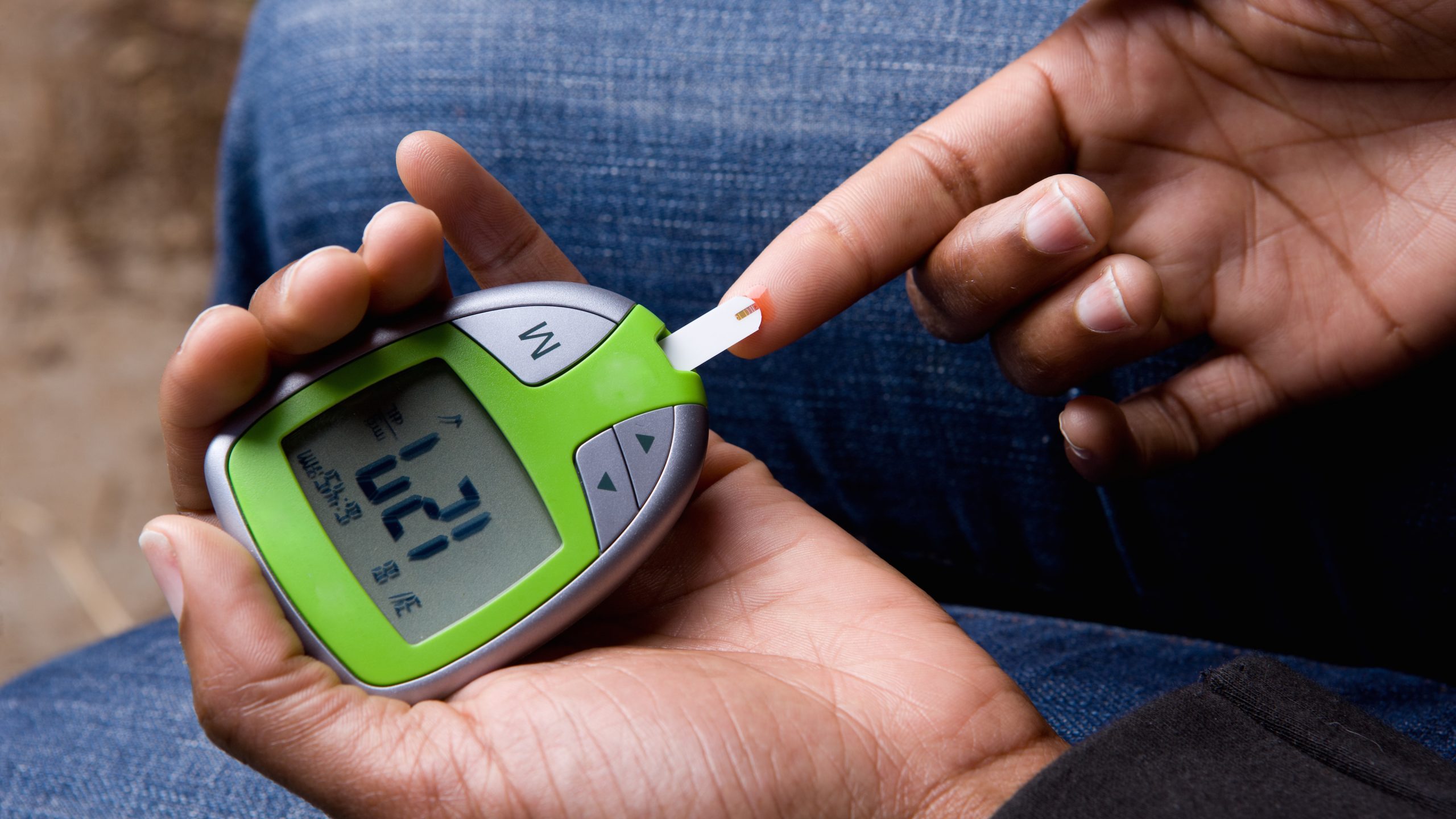
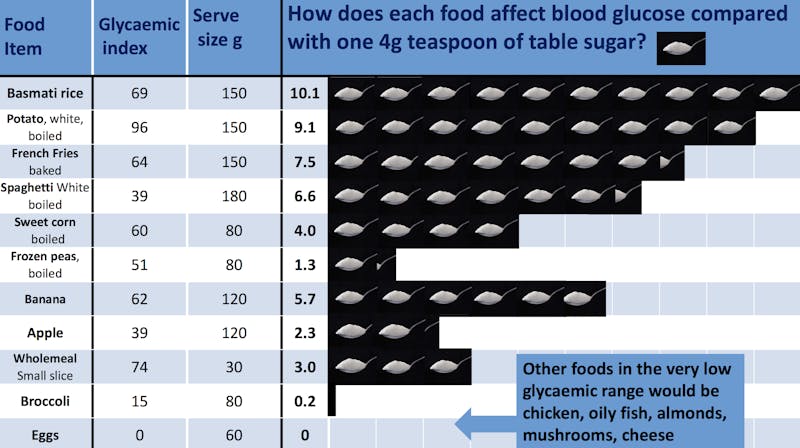
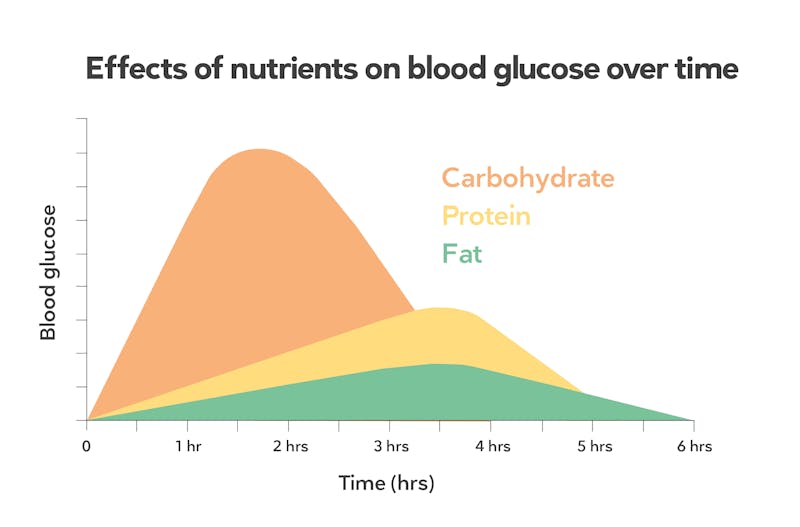

























Great diabetes education